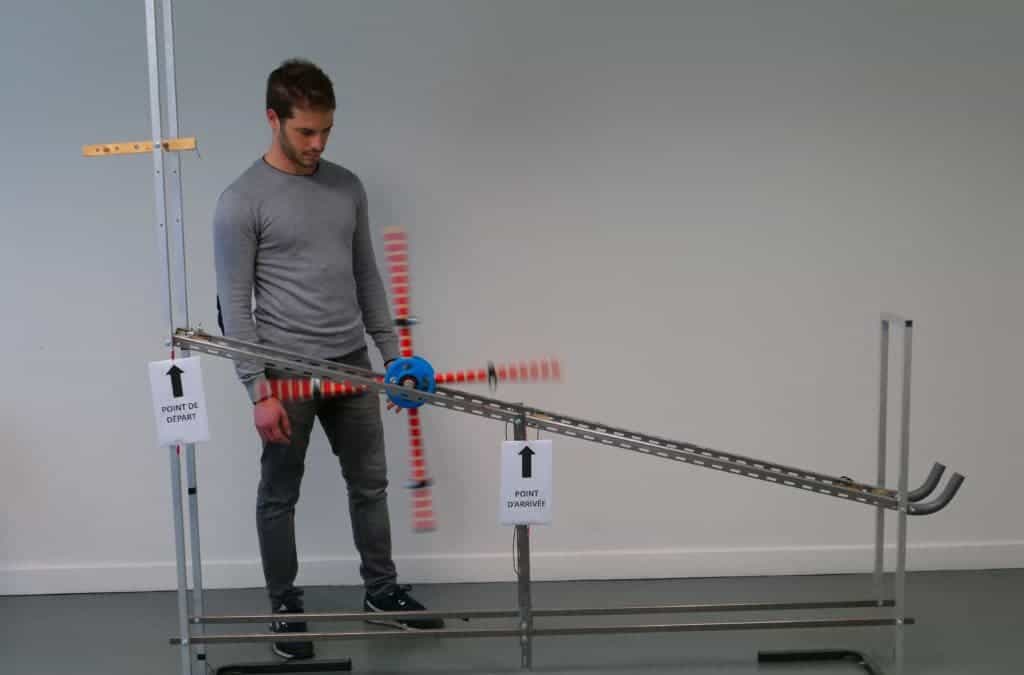Humanity didn’t rise to where it is today because of their smarts alone — we got here because we had no issue copying whatever our neighbors invented.

Participants could modify the position of 4 weights attached to the wheel’s spokes, in an attempt to increase its speed along the sloping rail.
Image credits Maxime Derex.
An international research team including members from the University of Exeter, the Université Catholique de Lille, CNRS, and Arizona State University, say that new technology doesn’t necessarily hinge on competence. In fact, the creation of effective new technologies doesn’t even require that we understand them, they write.
Monkey see monkey do
It’s easy — and let’s admit it, pleasant — to believe that our success relies on us being smarter and more ingenious than other species. Our fancy tools allowed us to adapt to a variety of environments and out-compete native species, leading us to the world of today, so, naturally, they must be the product of a deeply capable species.
While that may be true, it’s not all brains, says the team. The functionality of many traditional technologies — the bow and arrow or kayaks for example — depends to some extent on parameters that are hard to understand or model even today. This makes some anthropologists suspect that technology arises from our propensity to copy other members of the group, not raw smarts. In such a system, small improvements to any existing technology will be selected for — similarly to biological evolution — eventually generating technologies that are effective despite not being understood by individuals.
The team tested this theory in the lab by asking students to optimize a wheel traveling down on a set of rails. Each was allowed five attempts to produce the most effective configuration they could, before filling out a questionnaire that gauged their knowledge of the physics involved. To simulate successive generations of people, the team created ‘chains’ of students: each individual had access to the wheel configuration and effectiveness from the final two attempts made by the preceding participant.
The set-up did become more efficient (as judged by the wheel’s speed) over the course of these simulated generations, the team reports. However, each individual’s understanding of the physical mechanisms impacting its speed remained mediocre. This strongly suggests that the wheel’s speed wasn’t linked to the participant’s levels of understanding. Each student produced more or less random configurations, but the sum of their trials and errors — as well as the ability to copy the fastest known configuration from previous uses — was enough to refine the ‘technology’ over time.
The team also carried out a second experiment in which participants handed down their last two attempts to the following student. This included the system’s set-up and a piece of text describing their theory on the wheel’s effectiveness. Once again, the wheel would move faster over time, but the individuals were oblivious as to why. The team says that this step shows how transmission of false or incomplete theories could hinder or even prevent later generations properly understanding the system — in a way, blinding them to a part of the problem.
All in all, the experiments show how important cultural processes are in the emergence of complex tools, the team explains. Our ability to copy others lets us create technology that no single individual could generate on their own. The authors say the findings suggest we should be more reserved in interpreting archeological remains in terms of cognitive capacity, as their results show that the later does not necessarily drive the former.
Paper DOI: http://dx.doi.org/10.1038/s41562-019-0567-9









